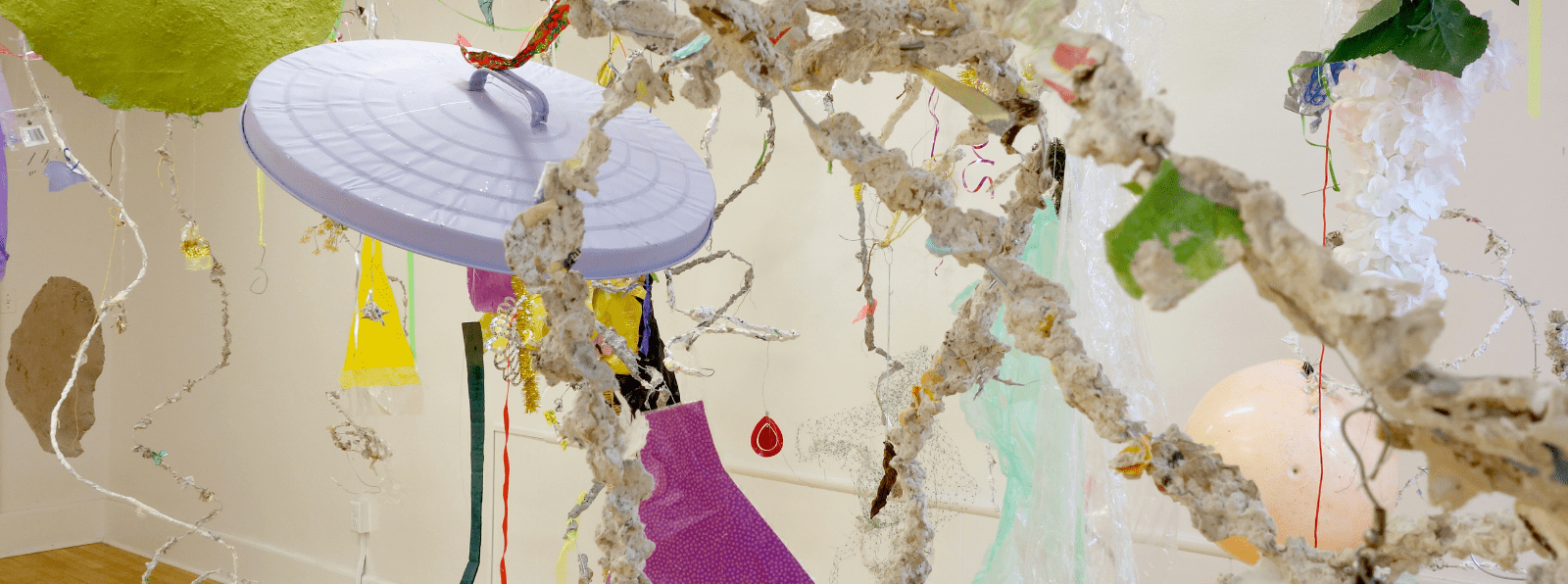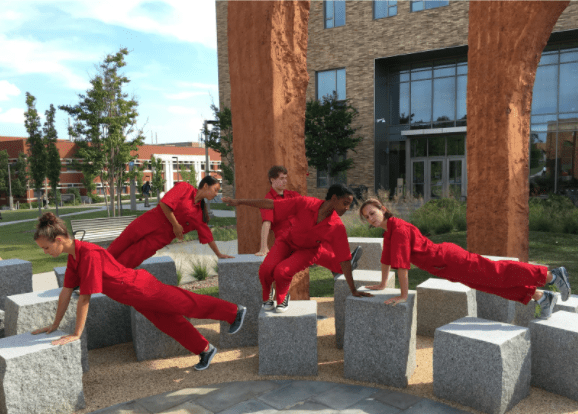Conservation grants support organizations conserving and preserving existing local public artworks.
PAAM Conservation grants support conservation planning efforts — including collection inventories, digitization of records and databases, community outreach, research, and assessments — as well as the implementation of conservation and relocation efforts that maintain or improve public access to artworks.
Public Art is defined as artwork that is free, intentionally created for, and accessible to the public. It can express community values, enhance an environment, or raise awareness of an unseen narrative. When supported by MSAC grants, public artwork must have a physical, lasting impact on the place and community where it is installed.
Contact the Public Art Program Director (listed below) with any specific questions about your application after reading the guidelines document.
Eligible applicants for Conservation grants must be an organization, as outlined below.
Organizations or Art Programs must be one of the following:
- Nonprofit organization (i.e., an organization with an IRS-designated 501(c)3 status) based in Maryland
- Nonprofit, Maryland-based fiscal sponsor organization applying on behalf of a Maryland-based group, project, or artist(s) with whom it has a Model A fiscal sponsorship agreement in place (i.e., comprehensive sponsorship, in which the assets, liabilities, and exempt activities collectively referred to as “the project” are housed within the fiscal sponsor)
- Unit of government (e.g., town, city, county, state, etc., with the capacity to undertake an arts program)
- College or university (i.e., an established higher education institution in Maryland)
- School (i.e., a public or private school serving students in grades pre-kindergarten through 12)
Applicants may only submit one PAAM grant application per fiscal year.
Grantees receiving Project Grants (New Artworks and Conservation) in the prior fiscal year (FY 2024) are not eligible to apply for any PAAM Project Grant in the subsequent fiscal year (FY 2025).
The following organizations listed under the FY24 New Artworks Project grants at the link here and under the FY24 Conservation Project grants at the link here are ineligible to apply for any PAAM Project grant in FY 2025.
Artwork Eligibility:
- The artwork must be considered public art, as defined in the MSAC glossary - refer to glossary here
- The final location of the artwork to be conserved must be in Maryland
- The artwork type may include, but not be limited to: sculpture, mural/painting, tile mosaic, mixed media, photography, and digital works. The artwork may also be functional amenities such as: benches, bike racks, creative way-finding, fences, screens, gateways, light works, awnings, and trellises
- Artwork must be publicly accessible
- Artwork must comply with the local jurisdiction’s regulations, permissions, and permitting requirements for conserving artwork(s) on public or private property. Applicants are required to do their own research in this regard.
- Artworks installed on private property must describe how the site is significant to the community and is accessible to and benefits the greater public
- The eligibility guidelines listed above provide an overview only. There may be instances where MSAC staff make eligibility determinations based on situations not described here but in support of the mission of the agency and the Department of Commerce.
The PAAM Conservation grant program provides two types of support:
- The Conservation Planning Grant awards $10,000 to support artwork conservation planning efforts including: project administration, consultancy fees, community engagement, and collection management services and technology.
- The Conservation Implementation Grant awards up to $30,000 to support the conservation of permanent public artwork. The conservation project must be fully developed including identification of the project team and support and approval of the owners of the artwork and the site where it is located.
For both Planning and Implementation grants, the final location of the artwork to be conserved must be within Maryland.

MSAC utilizes a multi-disciplinary, statewide grant panel to electronically review and score applications.
Before submitting a completed application, refer to the FY 2025 Conservation Planning Grant Rubric and the FY 2025 Conservation Project Grant Rubric for the complete scoring criteria panelists use to evaluate applications.
Conservation Planning Grants may be used to support conservation planning efforts for the proposed public artwork located in Maryland. Grants may be used for:
- Administrative fees related to project management and planning
- Consultant fee(s) such as:
- Professional Conservator
- Artist
- Structural Engineer
- Materials specialist (painter, welder, etc.)
- Historian
- Preservationist
- Community Engagement includes:
- Public meetings
- Community Education
- Information campaigns
- Collection Management Activities & Technology including:
- Collection Management consultant
- Local survey or inventory work
- Inventory file digitization
- Creation or update of an artwork database
- Purchase or lease of collection management software
Conservation Project Grants may be used to support the execution of a fully developed and planned conservation work on the proposed public artwork located in Maryland. Grant funds may be used for:
- Relocating a public artwork within or to Maryland to increase public access to the artwork and its long-term preservation. It is intended the artwork be conserved as part of this process.
- Conservation and maintenance activities that will contribute to the long-term appreciation and sustainability of the artwork including but not limited to:
- Cleaning, waxing, coating, and painting conducted by professional service providers
- Replacement or addition of components to provide structural integrity to the artwork, frame, plinth, pedestal, base, or foundation integral to the display of the artwork
- Landscape site improvements such as drainage, plant pruning, maintenance, and/or replacement
- Lighting and electrical work that contributes to public accessibility by increasing visibility and safety, or improves energy efficiency of outdated lighting and digital components
- Conservation of existing or the creation of new identification and interpretive signage, including writers, designers, fabrication, and installation
- Organization administration/project management fee (cannot exceed 10% of the grant request)
Grant funds may not be used for:
- Signage (artwork can include a sign component or interpretive plaque) however the grant can not fund signage in and of itself
- Artworks that have a final sited location outside of Maryland
- Artworks that do not fall under MSAC’s definition of public art. Refer to the Glossary here
- Purchase, lease, or exhibition of artwork or editions
- Ongoing operational expenses of the applicant or partner
- Capital improvements not directly related to the public artwork
- Artwork that is not publicly accessible
- Acquisition of capital assets
- Capital improvements or purchases of permanent equipment
- Activities for the exclusive benefit of an organization’s members
- Contributions to any persons who hold, or are candidates for, elected office
- Contributions to any political party, organization, or action committee
- Activities in connection with any political campaign or referendum
- Lobbying activities
- Expenses for activities or projects already completed at the time of grant application
- Expenses for which the applicant has been awarded funds through another MSAC grant program (i.e., an applicant may only be awarded MSAC funds once for any individual project expense; contact MSAC staff with questions)
- Organization’s indirect costs over 10 percent of the total grant request
- Stipends or honorariums to youth or student participants
- Multi-phased artworks that have received prior PAAM grant funding
Organizations apply via the secure online grants application software SmartSimple. Log in or create a free account at marylandarts.smartsimple.com.
- Applicants are required to complete and submit their applications by electronic means, including the use of an electronic signature.
- Technical support for SmartSimple is available during regular office hours.
- Lost, misdirected or late applications are the sole responsibility of the applicant.
- Applicants must meet all revision deadlines after submission, as specified in writing, or the application will be withdrawn.
All grantees must file a final report in SmartSimple. The report will be added to the grantee’s SmartSimple profile as soon as the GAF is fully executed.
The final report deadline for Conservation Planning grants is March 30, 2026 and for Project grants, September 30, 2026.
The final report form collects information about the grantee and grant activities, including optional demographic information, data for the National Endowment for the Arts, summary of activities and use of grant funds, and other program-specific information and documents, as relevant.
Grant funds may not be used to offset grantees’ State liabilities; as such, grantees whose grant payments were intercepted by GAD due to Maryland state taxes or other state liabilities (as outlined in the Payments section) are not exempt from submitting the required report(s). Grantees must either return the funds to MSAC or follow through with their proposed grant activities and submit report(s) accordingly.
-
 Contact
Contact -
 Contact
Contact

